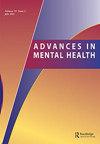A pragmatic evaluation of a high-fidelity dialectical behaviour therapy programme for youth with borderline personality disorder
IF 1.4
Q3 PSYCHIATRY
引用次数: 13
Abstract
ABSTRACT Objective: This paper describes and evaluates a high-fidelity Dialectical Behaviour Therapy (DBT) programme for youth (15–25 years). The project was undertaken as a partnership between public mental health services and a non-government organisation in regional Australia. DBT is an evidence-based treatment for Borderline Personality Disorder (BPD) but is rarely accessible within public mental health services. Method: Participants completed an Adverse Childhood Experiences (ACE) questionnaire, repeated measures of the Borderline Symptom List (BSL-23), supplementary behaviour questionnaire (BSL-Supp) and general well-being questionnaires. Hospital and emergency service use was examined for the year prior to referral to the programme and for the year following completion. The characteristics of those people who did not complete the programme were also described. Results: Borderline personality symptoms were correlated with the number of reported adverse childhood experiences. Participants who remained in the programme for at least twelve weeks had significant reductions in BSL-23 scores with several reporting no symptoms after completing the programme. Participants had high rates of hospital and emergency department use in the year before participation and significantly less use in the year following completion. Discussion: It is feasible to deliver a high fidelity DBT programme to youth in a regional centre in Australia and achieve reductions in symptoms and use of hospital and emergency services in a regional public mental health service. Video Abstract Read the transcript Watch the video on Vimeo青少年边缘型人格障碍的高保真辩证行为治疗方案的实用评价
摘要目的:本文描述并评估了一种针对青少年(15-25岁)的高保真辩证行为疗法(DBT)方案。该项目是作为澳大利亚区域公共精神卫生服务机构与一个非政府组织之间的伙伴关系开展的。DBT是一种基于证据的边缘型人格障碍(BPD)治疗方法,但很少在公共精神卫生服务中获得。方法:参与者完成不良童年经历问卷(ACE)、重复测量边缘性症状表(BSL-23)、补充行为问卷(BSL-Supp)和一般幸福感问卷。检查了转到方案前一年和方案完成后一年的医院和急诊服务使用情况。那些没有完成项目的人的特征也被描述了出来。结果:边缘型人格症状与不良童年经历的报告次数相关。参与该计划至少12周的参与者BSL-23评分显著下降,其中一些人在完成该计划后报告没有症状。参与者在参加前一年的医院和急诊科使用率很高,在完成后一年的使用率明显降低。讨论:在澳大利亚的一个区域中心向青年提供高保真的DBT方案,并在区域公共精神卫生服务中减少症状和使用医院和紧急服务是可行的。视频摘要阅读文本在Vimeo上观看视频
本文章由计算机程序翻译,如有差异,请以英文原文为准。
求助全文
约1分钟内获得全文
求助全文

 求助内容:
求助内容: 应助结果提醒方式:
应助结果提醒方式:


